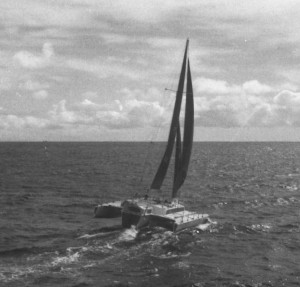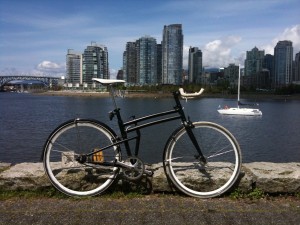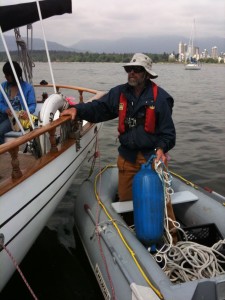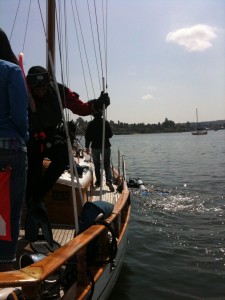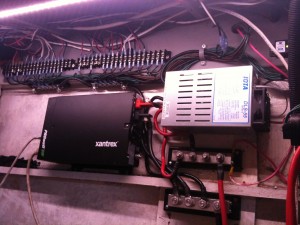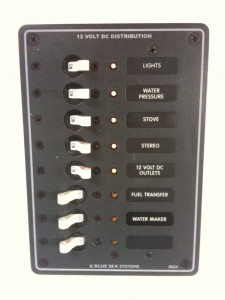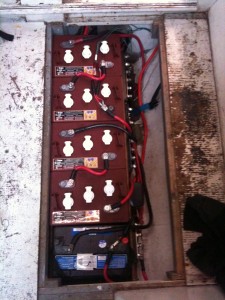Well, we’re away. We left on Monday September 12th 2011 as planned, leaving Vancouver about ten hours later than expected but making good time across the Georgia Straight, spent the night at the mouth of Porlier Pass and motor-sailed the next day down to Cadboro Bay just east of Victoria. We crossed the Juan de Fuca on Wednesday, cleared customs and spent two days in Port Angeles, then motored on up the Juan de Fuca arriving in Neah Bay on Friday night. The weekend was spent carefully watching for a “weather window”, in which we could set out with six to ten days of reasonably good weather to look forward to… but then I made an expensive mistake.
We’ve entered another one of these infuriating “hurry up and wait” scenarios, as a result of my carelessness while working on the steering system. I was removing a sprocket when it got away from me and clattered down the centerboard trunk and into the ocean. Given that we’re anchored in soft mud in about 10m of water the chances of finding a heavy 10cm chunk of dark bronze were pretty slim, but we had a diver go down twice to look anyway. The replacement part is on rush delivery from Ontario and will hopefully arrive in the next few days.
The big question now is whether or not we’ve missed our weather window to head out into the open ocean, or whether the big storm winds of October and November are upon us. Traditionally, the end of October is the absolute cutoff time for heading out on an offshore passage south from the Pacific Northwest, but what with the changing weather patterns of the past couple of years it’s anyone’s guess.
Too much has happened lately to give a full rundown, so I will return once more to a pictorial style of blogging; here are a few snapshots of life over the past few weeks..:

During the last weeks leading up to the final departure, we spent as much time as possible hanging out with friends, enjoying what little summer Vancouver had to offer up this year. With so many projects to complete, perfect moments like this were rare but treasured.
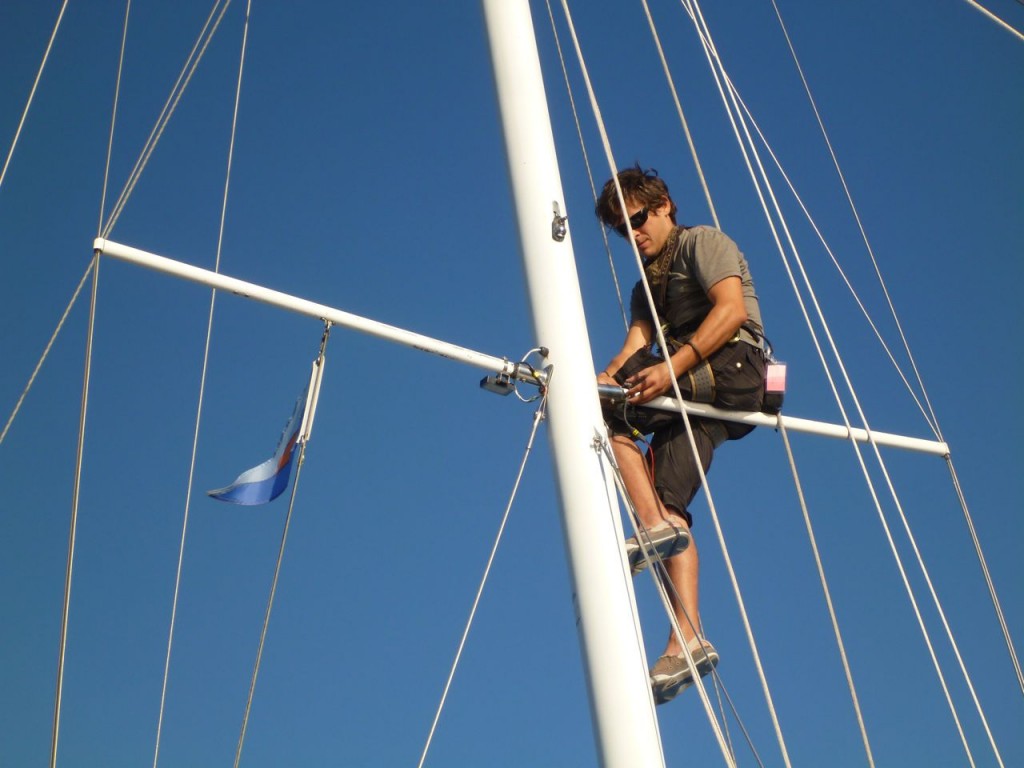
Most of the boat projects were one-man jobs, but Miya had to winch me up the mast several times for minor repairs. The next time we haul out I will likely run a few more wires up to the masthead; it’d be a much better place to mount the Ubiquity Bullet router and high-gain wireless antenna than the current location on the aft cabin roof, for instance, and someday I’d like to mount a webcam up there as well.
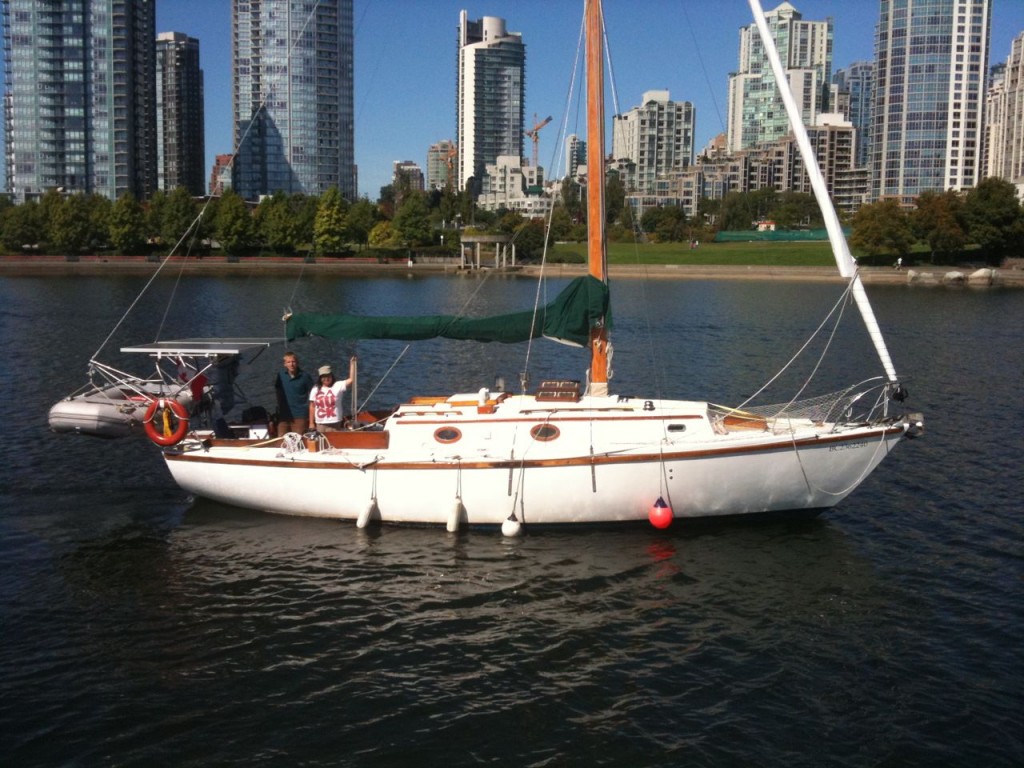
Our friend Jared has been working on his boat ‘Resolution‘ for the past year or so, and left about ten days before we did for San Francisco. He’s taken a few different routes than we have; going with a smaller monohull for instance, installing davits and monster solar panels and choosing a SatPhone instead of radio communications. It’s been very interesting to watch another geek take on the challenges of living aboard on his own terms.
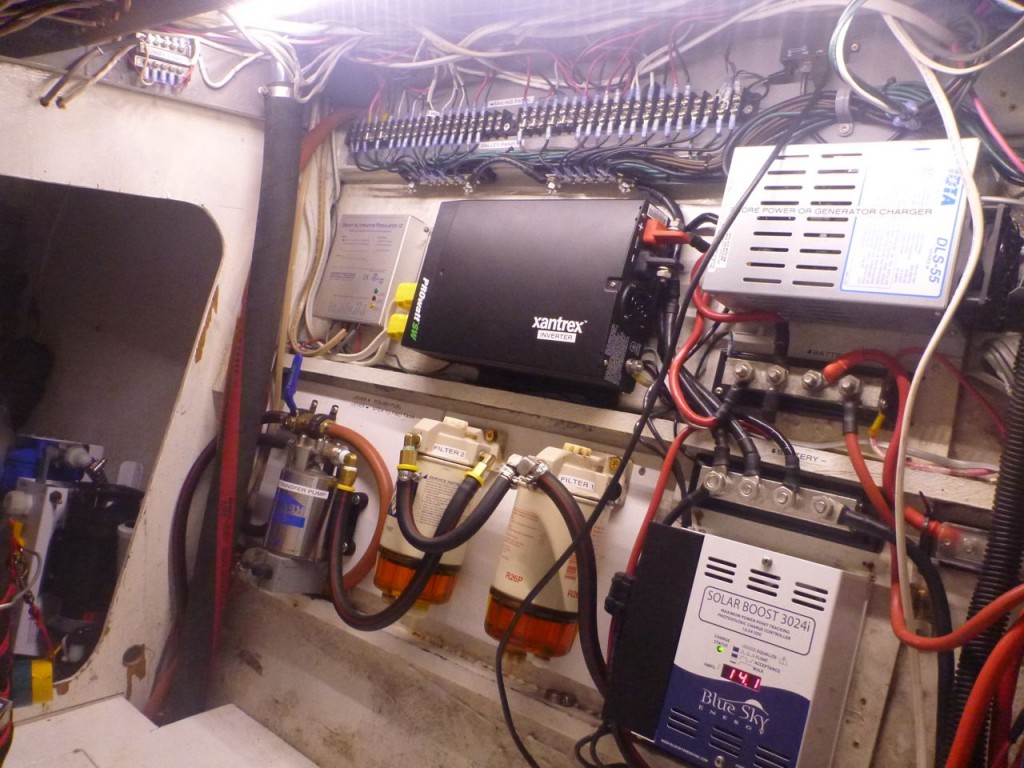
I’ve finally gotten the electrical room into a state that I can consider “finished”. New features since the last photos – a smart alternator regulator on the far left, and a homebrew fuel polishing system on the bottom left, comprised of a pair of Racor diesel fuel filters and a Reverso fuel pump. The polishing system should help keep our engine Maude healthy even in the third world, where fuel quality can be questionable at best. Incidentally, since the last cooling system overhaul she’s been running like a top!
On the extreme left you can see a little piece of the yet-to-be-installed Spectra Ventura 150 watermaker; the next compartment over houses our water system, and that project will be a fun challenge I’m sure… it will require a haulout to finish as the watermaker will need two new through-hull fittings, one for seawater intake and one for brine discharge.
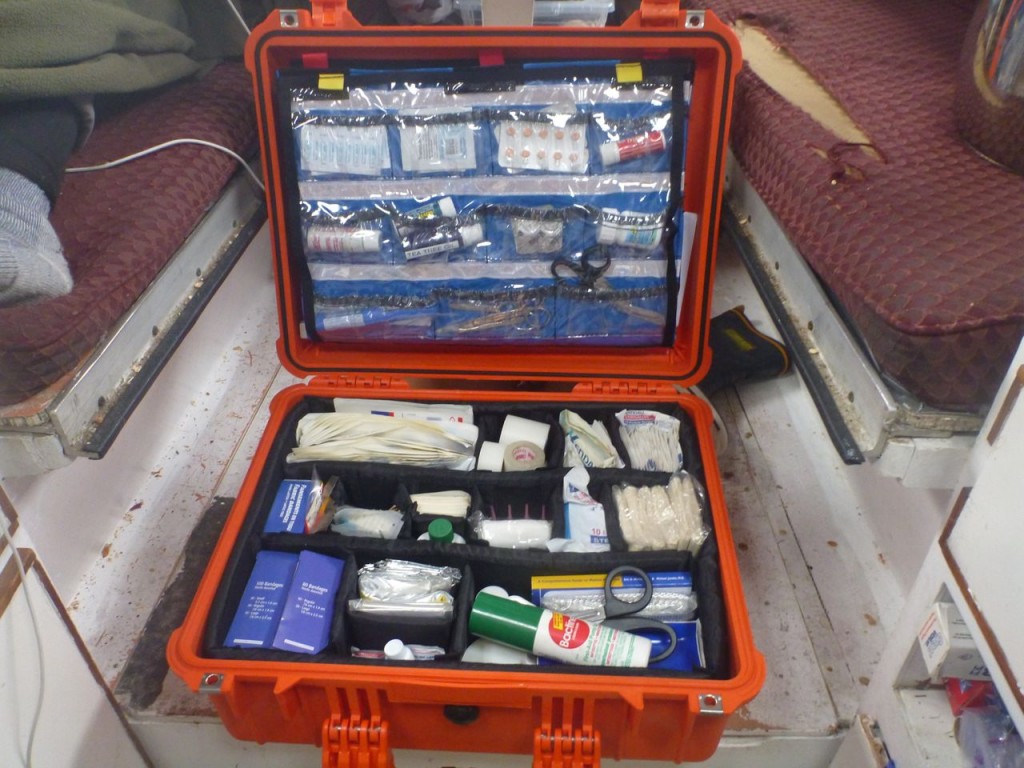
If you’re planning to head offshore, you’d best be prepared for whatever may come to pass – and the first-aid kit on TIE Fighter was not exactly anything to write home about. Taking careful notes at both a Red Cross First Aid course and a pair of Bluewater Cruising Offshore First-Aid seminar, I assembled our new kit into a bomb-proof Pelican 1550EMS case which should survive anything that we throw at it. The kit contains everything from happy-face bandaids to hardcore prescription antibiotics and injectable painkillers.
An awesome first-aid kit is only half the battle though; Miya and I have enrolled in a Wilderness First Responder first aid course in San Francisco in October, which is an intensive 80-hour course covering emergency first aid in remote scenarios where professional help might not be coming right away.

Once we finally got away, the stress of getting ready to leave didn’t fall away as easily as planned. We were off, for sure, but tensions ran a little high while we adjusted to the new state of being. The first night we pulled into an anchorage in the dark, and currents and tides and deadheads made the situation questionable, but once the full moon rose everything came into focus. Waking up the next morning everything was much clearer.
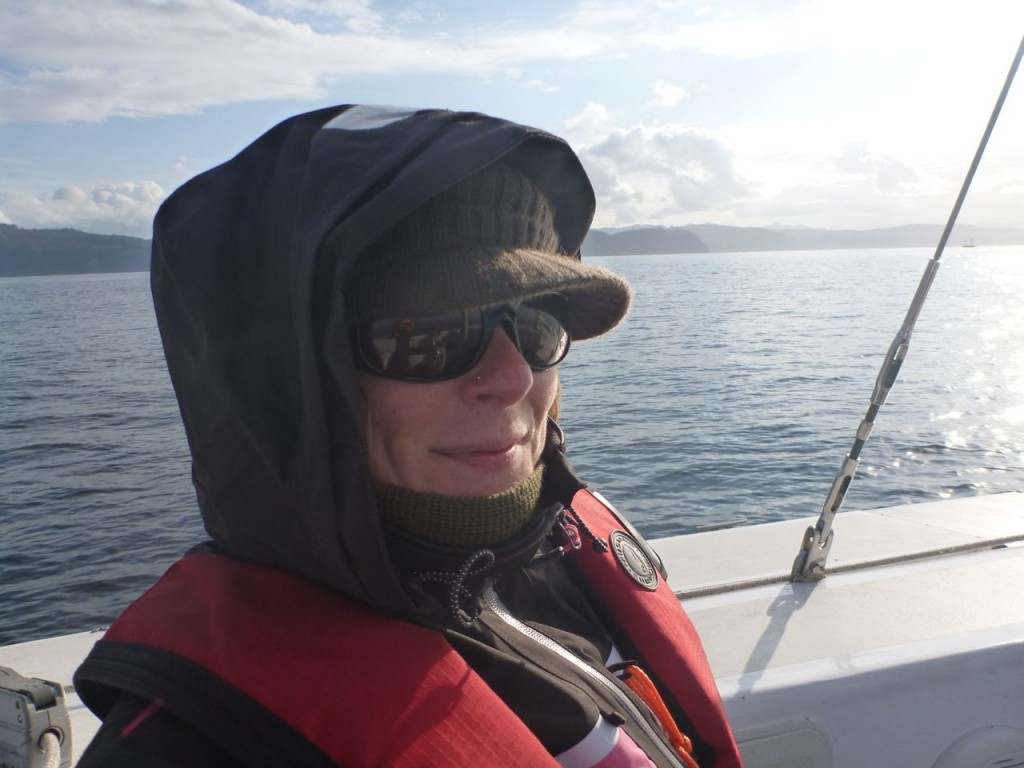
Neither of us were prepared for the realities of sailing in September; I think we were both spoiled by the 29º temperatures in Vancouver the days leading up to the grand departure. All of our winter clothes were packed away in tupperware containers in the amas, but those were quickly pulled out as it became apparent that gloves, hats and scarves would be necessary. We are very glad to have high-quality foul weather gear, and look forward to soon sailing in warm waters.

Before clearing customs into a new country, a vessel should fly a yellow flag – the symbol for the letter ‘Q’, or ‘quarantine’ – to indicate to the port that the vessel has not yet cleared customs but intends to. After clearing customs, the yellow flag is replaced by a flag of the country being visited, known as a ‘courtesy flag’. Raising the courtesy flag of the US is something I had been looking forward to for a very long time, as it marks a huge milestone in this adventure!
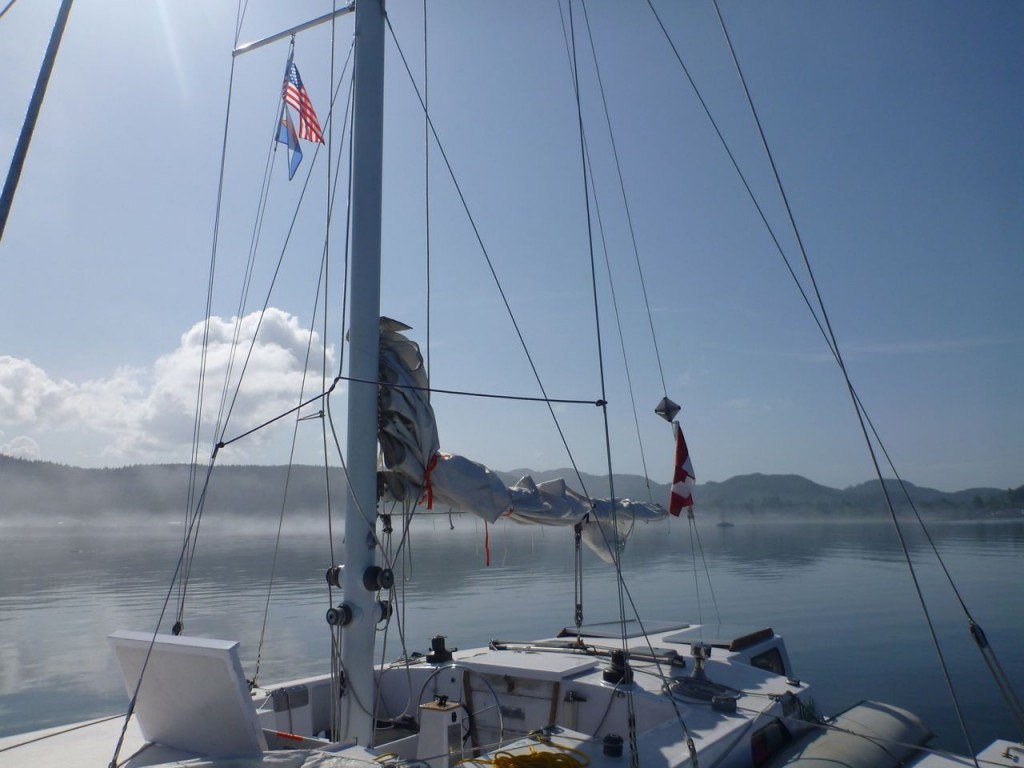
Neah Bay, at the tip of the Olympic Peninsula, is the last safe harbour before heading out into the open Pacific Ocean. It is a small Makah indian reservation with a population of about 700 people, but we are still able to steal internet access from several open wireless networks using our high-powered antenna and router. The bay is wild and beautiful, with loons calling in the night and thick fog rolling in regularly.
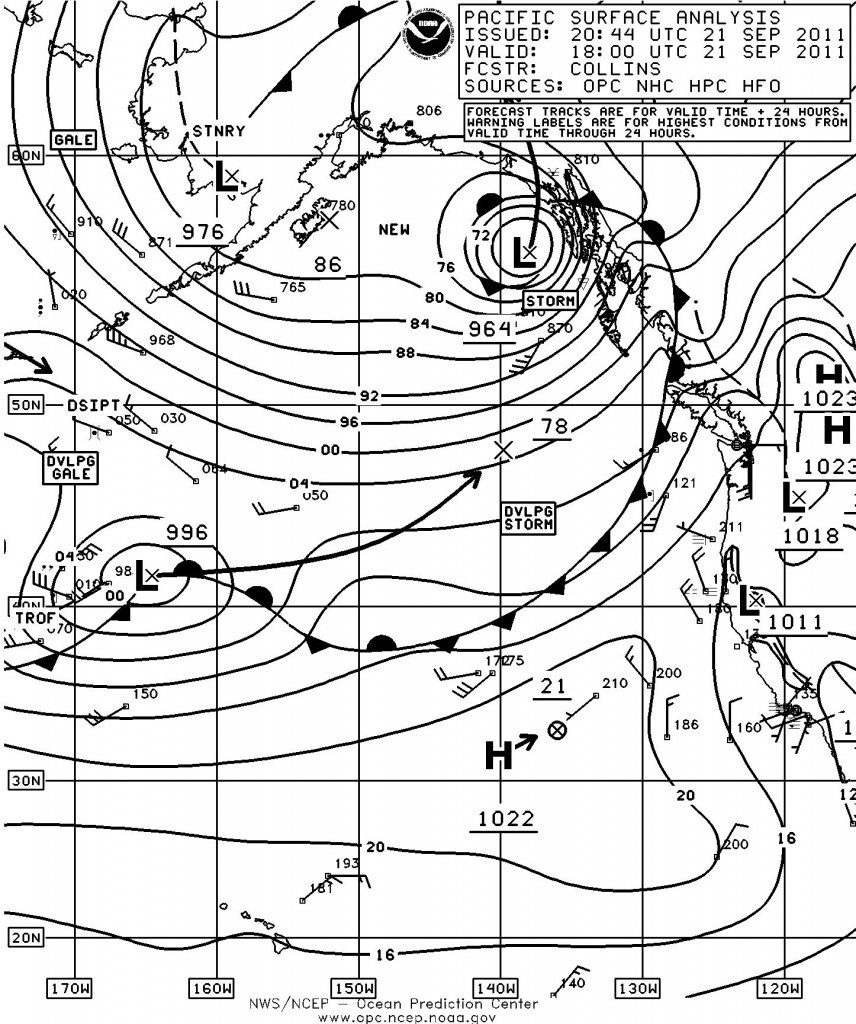
This is a ‘weatherfax’ transmission, retrieved from the internet. This is basically our window into what’s going on weather-wise on the open ocean, and once we have a working HF ham radio rig on the boat we should be able to pull down these images for free from wherever we happen to be on the ocean. Learning to interpret these images is a steep learning curve, but once you get past a few key hurdles the information becomes somewhat fascinating.
One of the things I’ve enjoyed most about moving onto the ocean is the amount of knowledge about the world around me that I’ve been forced to learn – it boggles the mind that the tides move in and out with such regularity, yet mere meters away from the ocean Vancouver has a half a million people who have no idea what phase the tide is at any given time. Similarly, I feel like I’ve been living with the weather for my entire life, looking up at the sky without having the foggiest (heh) idea what I’ve been looking at. The more I learn about how weather systems function, the more I want to know!
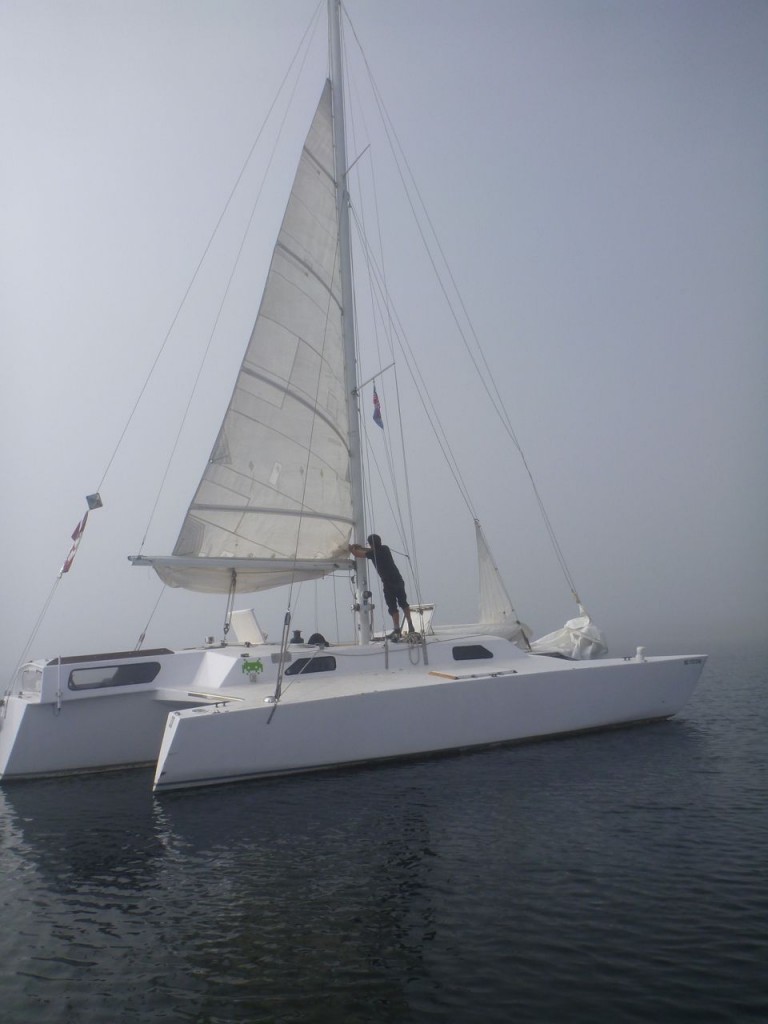
While we wait for the weather to change to a more favourable window there are dozens of small projects that didn’t get finished before we left Vancouver. In this photo I’m working on the reefing system; a series of ropes and pulleys and hooks that helps to get the main sail “reefed”, or shortened by a third – or two thirds – in case of heavy winds. Now complete, the improved reefing system will help us to sail even when the winds blow at gale force or higher.
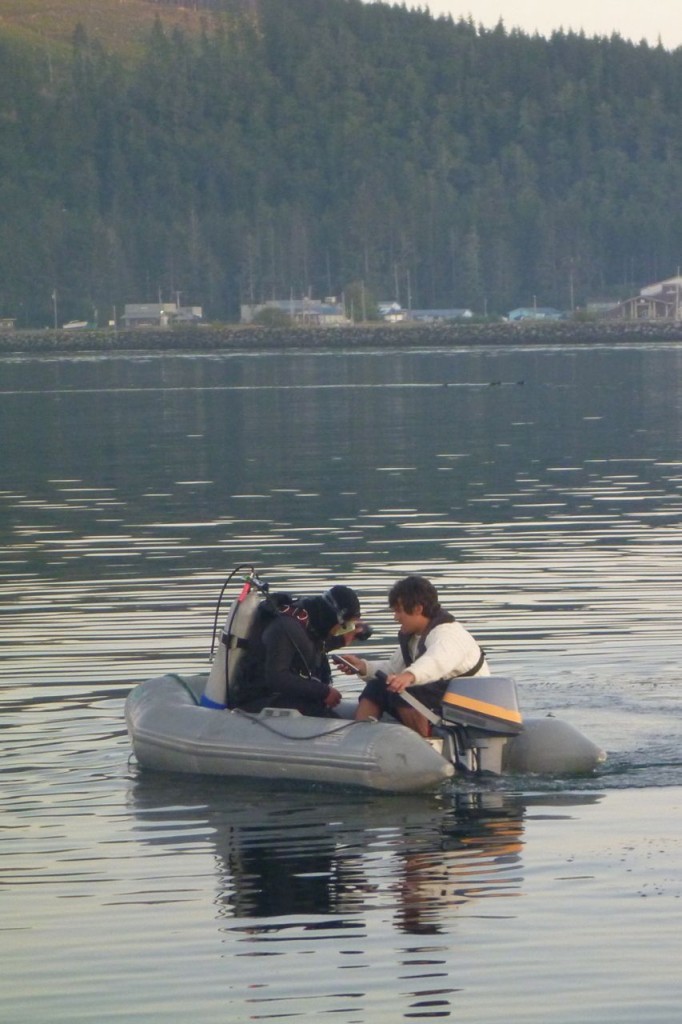
When I dropped the sprocket from the steering system into the ocean, I essentially paralyzed us; we can’t steer at all. We’re not only stuck in Neah Bay, we’re stuck right where we’ve anchored until we can replace the part or work around it somehow. Miya walked the local docks looking for a diver, and to our luck the first person she talked to offered to dive for us. Daren Akin, a local diver, went down twice to try to find the part – sadly he was unable to locate it, though the attempt was greatly appreciated!
I cannot believe I did this. I really need to rewire my brain to assign more importance to small bits of hardware when working over a big hole that leads to oblivion. You’d think I would have learned that lesson from my bicycle.

So now we’re stuck, with most of the projects out of the way and a boat fully stocked and ready to travel. The delay has been a blessing in some ways, letting us finish up work that we hadn’t had time for and giving us a chance to catch our breaths and adapt to the new realities of life on the road, to sleep in and prepare for the monster ten-day marathon sail down to San Francisco.
Soon the company in Ontario from whom I’ve purchased the replacement part for the steering column will send me the tracking number for the UPS shipment, so that I might have a better idea of when we’ll be out of here – but until then, we remain at anchor.



